Contents
Suvorov’s onion, or Anzur (Allium suworowii), is an original early flowering crop grown by many gardeners. This wild plant is found in Altai and in the mountainous regions of Asia. But the ability of Suvorov’s onion to easily adapt to any climatic conditions made it possible to grow it in different regions of the country. The plant is valued for early flowering along with tulips and daffodils, as well as beneficial properties for human health.
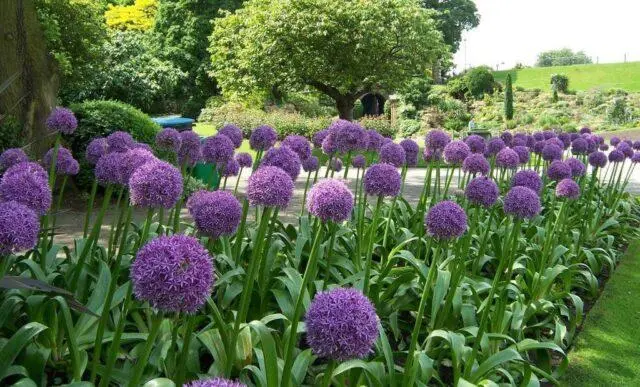
Suvorov’s bow is an excellent honey plant
Origin
This culture is one of the representatives of wild-growing onions, which have a common name – Anzury. It was named after the great commander A. V. Suvorov. There is a legend that during the long passage of the army through the Alps, it was this plant that saved the soldiers from beriberi and scurvy.
In different sources, you can also find other names for Anzur, namely, a giant, stalked or high onion, as well as Rocambole garlic.
Is Suvorov’s onion edible?
Anzur is an edible plant, but it can only be eaten during a certain period of time. The vegetation of Suvorov’s onion begins in early spring, when the snow has not yet completely melted. It is at this time that the vitamin greens of the plant are valued, when young leaves are distinguished by their juiciness and delicate texture. They can be added to salads, put in sandwiches, soups, okroshka.
But the ripened Anzur bulb cannot be eaten fresh, despite the high content of useful components in it. It can only be eaten after soaking and further processing.
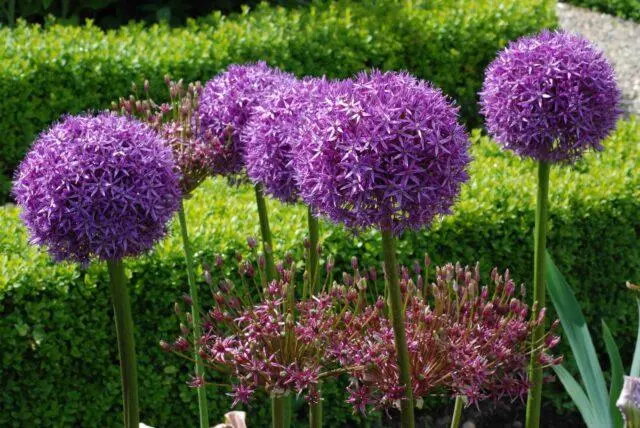
In terms of vitamin C content, Suvorov’s onion is superior to onion
Useful properties and contraindications of onion Suvorov
Mountain onion Anzur has a rich chemical composition. The leaves and the underground part of the plant contain a complex of vitamins, mineral components, and also include essential oils, sugars, alkaloids, saponites.
Useful properties of the plant:
- strengthens the immune system;
- improves brain activity;
- increases the body’s resistance to infections and bacteria;
- promotes the excretion of mucus;
- has an anesthetic effect;
- enhances memory;
- activates metabolic processes;
- It lowers the level of blood sugar.
But you need to use Suvorov’s bow with caution, as it can cause allergies. Therefore, you can start introducing Anzur into the diet with a small amount, paying attention to the reaction of the body.
Other contraindications:
- heart disease;
- pregnancy;
- lactation;
- age of 14 years;
- disruption of the digestive system.
Where to use
Anzur is widely used in ornamental gardening. Its huge balls-inflorescences, towering on long peduncles, are able to decorate any personal plot.
Suvorov’s bow is also used in cooking. The leaves and the underground part of the plant can be pickled, preserved and added to various dishes.
The beneficial properties of Anzur are widely used in folk medicine. Based on the plant, infusions, decoctions, lotions, tinctures are prepared.
The healing properties of the plant are used for:
- glaucoma;
- respiratory diseases;
- hypertension;
- cold.
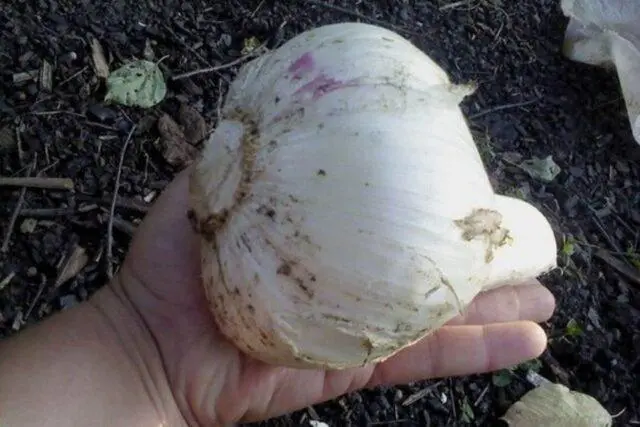
In Asia, Suvorov’s onion is always added to pilaf
Description of Suvorov’s bow
Anzur is a perennial crop of the Onion family. In one place, the plant can grow up to 5-7 years without losing its decorative qualities. Culture looks good in group plantings.
Appearance
Suvorov’s onion is characterized by belt-like leaves, which form a basal rosette with a diameter of 40-50 cm, consisting of 4-6 pcs. The length of their plates reaches 20 cm, and the width is about 4 cm. The shade of the leaves is green with a bluish bloom.
In a giant ornamental onion, the root system is a huge spherical bulb, the diameter of which is 3-10 cm, depending on the age of the plant. Root processes depart from it, the function of which is to absorb nutrients and moisture from the soil.
The plant forms a tall peduncle that grows from the center of the basal rosette of leaves. Its height reaches 1-1,3 m. At the top, a spherical inflorescence of a purple hue is formed, consisting of small lily-shaped flowers, which can be seen in the photo of the giant onion. The budding period begins in the second half of May or early June.
After that, an ovary is formed. Suvorov’s onion seeds are in many ways similar to garlic. They ripen at the end of June. After that, the leaves and peduncle fade sharply.
Ripening time and yield
Anzur is characterized by a fast growth rate. Its vegetation period begins at a temperature of + 5 °C. And within 1-1,5 months, leaves grow, a peduncle is formed. Bulbs are formed in the third year of planting seeds. From one bush you can get 4-6 pieces. weighing 100-150 g. Fruit picking should be carried out at the end of June.
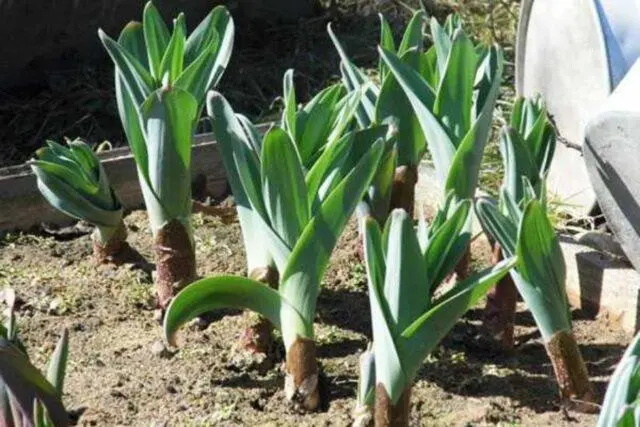
The young leaves of the plant are edible for 2-3 weeks.
Disease resistance
Suvorov’s bow, if the growing conditions and improper care are not met, can be affected by fungal diseases.
The most common of them are powdery mildew, fusarium, gray rot and rust.
Advantages and disadvantages
Suvorov’s bow has a number of advantages, so many gardeners prefer to grow it in their backyard. But the plant also has disadvantages that you need to pay attention to.
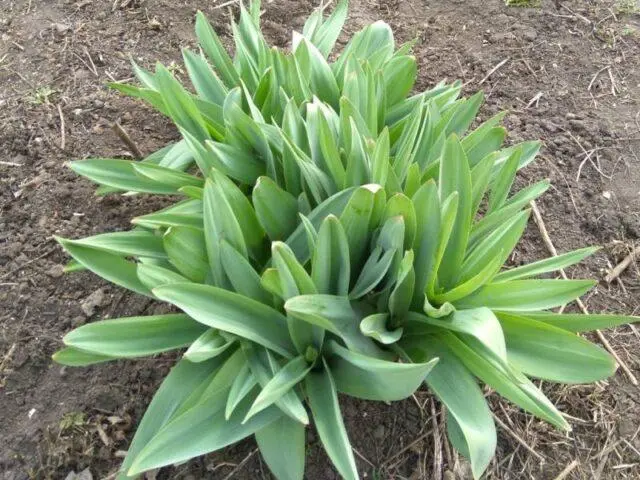
At the beginning of the growing season, Suvorov’s onion looks like tulip seedlings
The main advantages:
- undemanding to growing conditions, care;
- high decorative qualities;
- early flowering;
- has healing properties;
- subject to the rules can be eaten;
- high winter hardiness;
- easy reproduction;
- rich chemical composition.
Culture Disadvantages:
- may cause allergies;
- short growing season;
- does not tolerate stagnant moisture;
- greenery quickly coarsens;
- Bulbs must be soaked before use.
Planting Suvorov’s bow
Anzur can be planted with seeds, bulbs. Each of these methods has its own characteristics that you need to pay attention to.
Cultivation from seeds
It is recommended to plant the seeds of the crop in the fall during the planting period of garlic, since they need stratification for successful germination. To do this, it is recommended to make ridges 10-12 cm high to prevent wetting during thaws. The optimum embedment depth is 2 cm.
Onion seeds germinate at the end of March, at the beginning of April, when the daytime temperature will confidently stay at +5 ° C. When the seedlings begin to dry out in June, they should be dug up and the bulbs dried well. In autumn, re-plant in the ground at a distance of 5 cm. Repeat the procedure for the third season, and already in the fourth year, Suvorov’s bow can be transferred to a permanent place.
Vegetative way
Planting can also be carried out with slices of the bulb of the plant. To do this, it is necessary in June, when the leaves begin to fade sharply, to dig up Suvorov’s onion. Then dry well and leave until autumn. After that, divide into slices, like garlic, and land immediately in a permanent place. In this case, marketable bulbs can be harvested as early as next year.
Suvorov bow care
Suvorov’s onion-garlic does not require special attention from the grower. Watering the plant is necessary only in the absence of rain for a long time. To do this, use distilled water.
Anzur responds well to feeding. At the beginning of the growing season, it is recommended to use nitrogen-containing fertilizers, such as urea or ammonium nitrate, at the rate of 30 g per 10 liters of water. During the growth of the peduncle, the plant should be watered with an extract based on wood ash. To do this, pour 200 g of the component with hot water and leave for a day. And then bring the total volume of liquid to 10 liters and water the plantings of Suvorov’s onions.
At the end of flowering, it is recommended to fertilize the plant with potassium sulfide 25 g and superphosphate 30 g per bucket of water. This will allow Suvorov’s bow to regain strength and build up the bulb.
Throughout the growing season, the soil at the base of Anzur should be loosened. This is necessary to maintain air access to the roots and prevent stagnation of moisture.
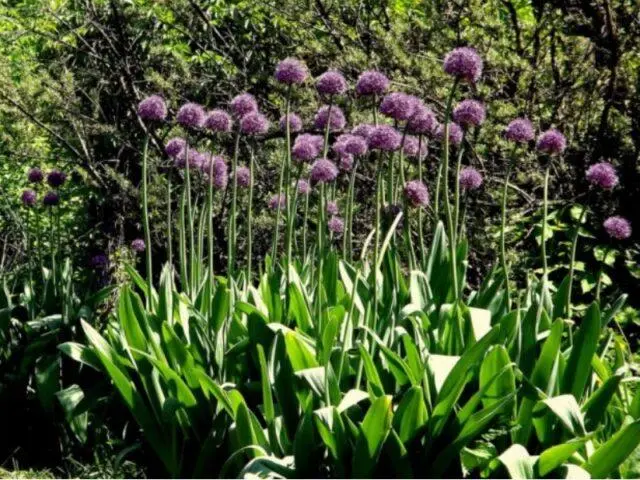
Anzur culture does not need warming for the winter
Conclusion
Suvorov’s onion is a plant that blooms when many more species are just waking up after winter. Therefore, flower growers paid attention to this culture. In addition, the plant is edible and can be used for medicinal purposes. Thanks to these qualities, the popularity of Anzur increased significantly, and this was also facilitated by the undemanding culture.










